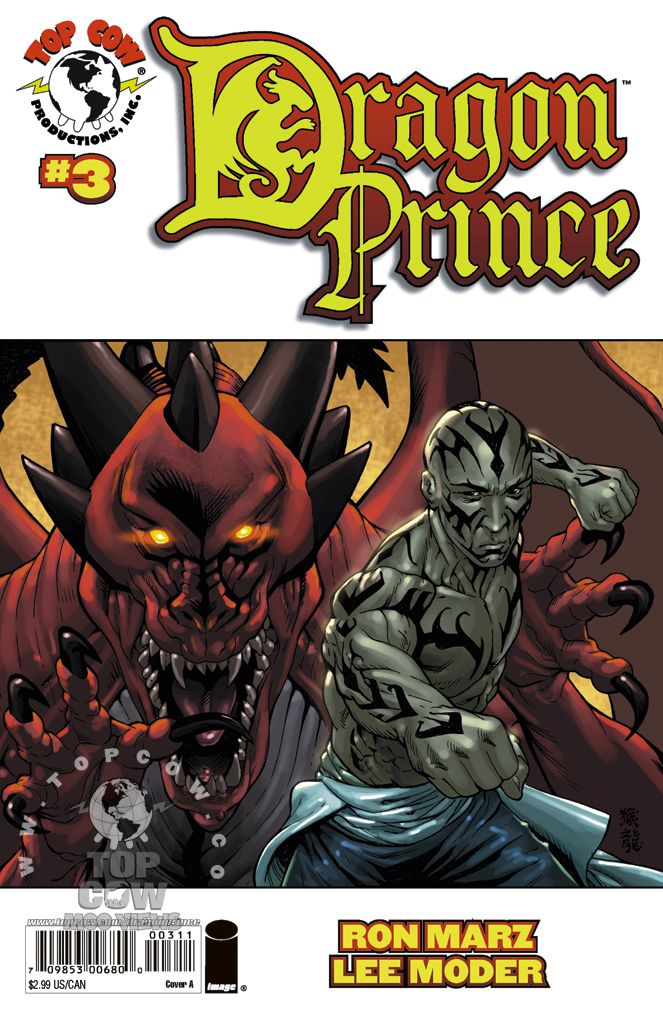Ah, the third issue where the plot slows down, so things can be explained -- this structure is strangely New Reader Friendly. I didn't read the first two issues of "Dragon Prince," but this issue is so easy to follow along that I wasn't lost at all. Aaron is a dragon, or half-dragon since his mother is human, and he's been captured by a group called the Magi that hunt dragons, supposedly to protect humanity.
There's something very familiar about that plot. It's not a rip-off of anything specific, but the general ideas are very basic and general: a young boy finds out he's got a secret heritage with two groups telling him conflicting things, each trying to win him over. But, Ron Marz makes this generic sort of plot work with subtle hints that Aaron is also aware of stories like that, and is wary of everything he's told. He doesn't believe what Madigan, leader of the Magi tells him, but he also doesn't disbelieve. The character is remarkably self-aware, but that self-awareness is downplayed and mostly hinted at.
Marz not only uses a generic plot that we've seen in many forms in many stories, but he uses that fact to his advantage, realizing that he doesn't need to pour on endless amounts of exposition when short lines that allude to well-known conventions do the job just as well.
The dragon hunter that captures Aaron and his mom gives a brief account of how one becomes a dragon hunter, beginning as a monk and going through various trials that result in most candidates dying or being found unworthy. Stories involving monks training in martial arts for a specific purpose are plentiful, so specific details would be unnecessary.
However, the plot is also hindered by its broad, generic elements, because it also doesn't move beyond them. Nothing in this issue is a surprise, even the final page reveal. While Marz uses conventions to keep the story moving forward, he doesn't do anything more. The issue is fairly typical and by the numbers.
Lee Moder's art is a great fit here because, like the plot, it has a cuteness to it, a familiarity almost. Moder's style isn't very distinct or unique, but it's also done ably and conveys the action sequences wonderfully as well as the discussions. His page layouts are basic, but also used effectively. One of the best things about this issue is how well the story and art work together, both focused on telling the same story in the same way.
"Dragon Prince" wouldn't seem out of place as an animated film with its solid, generic plot and characters, particularly its child protagonist. Marz's writing and Moder's art really capture that feel, albeit in a stripped down, focused fashion.
(Check out CBR's preview and see just how easy it is to hop on board this book!)

